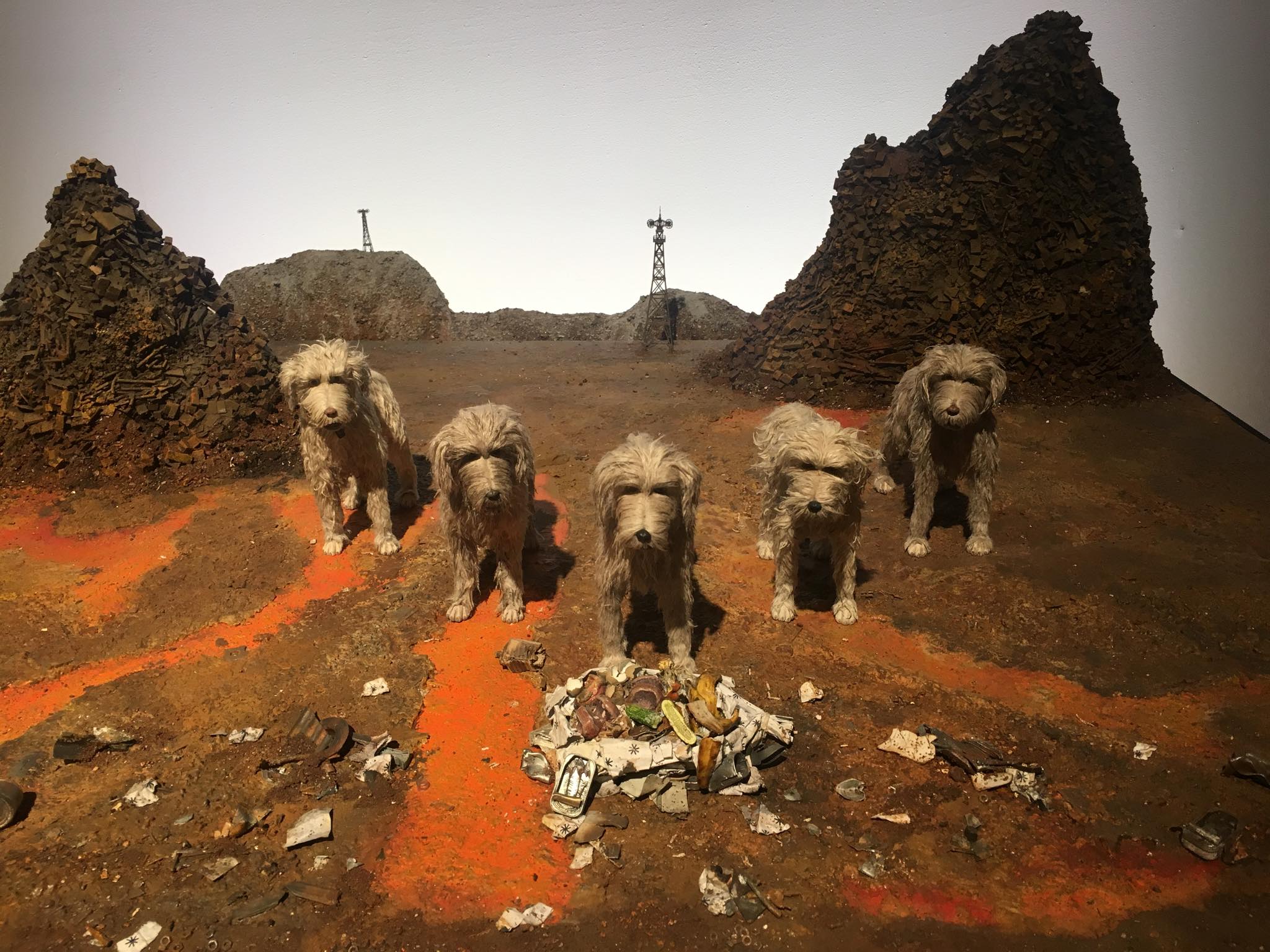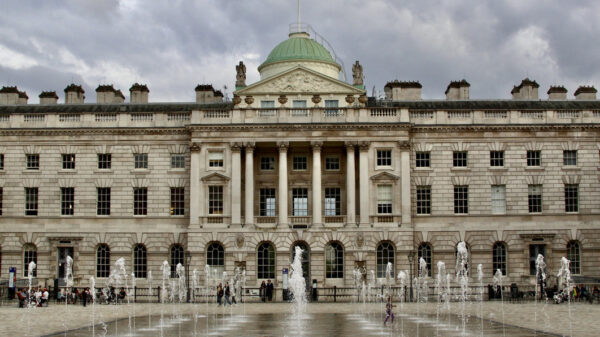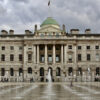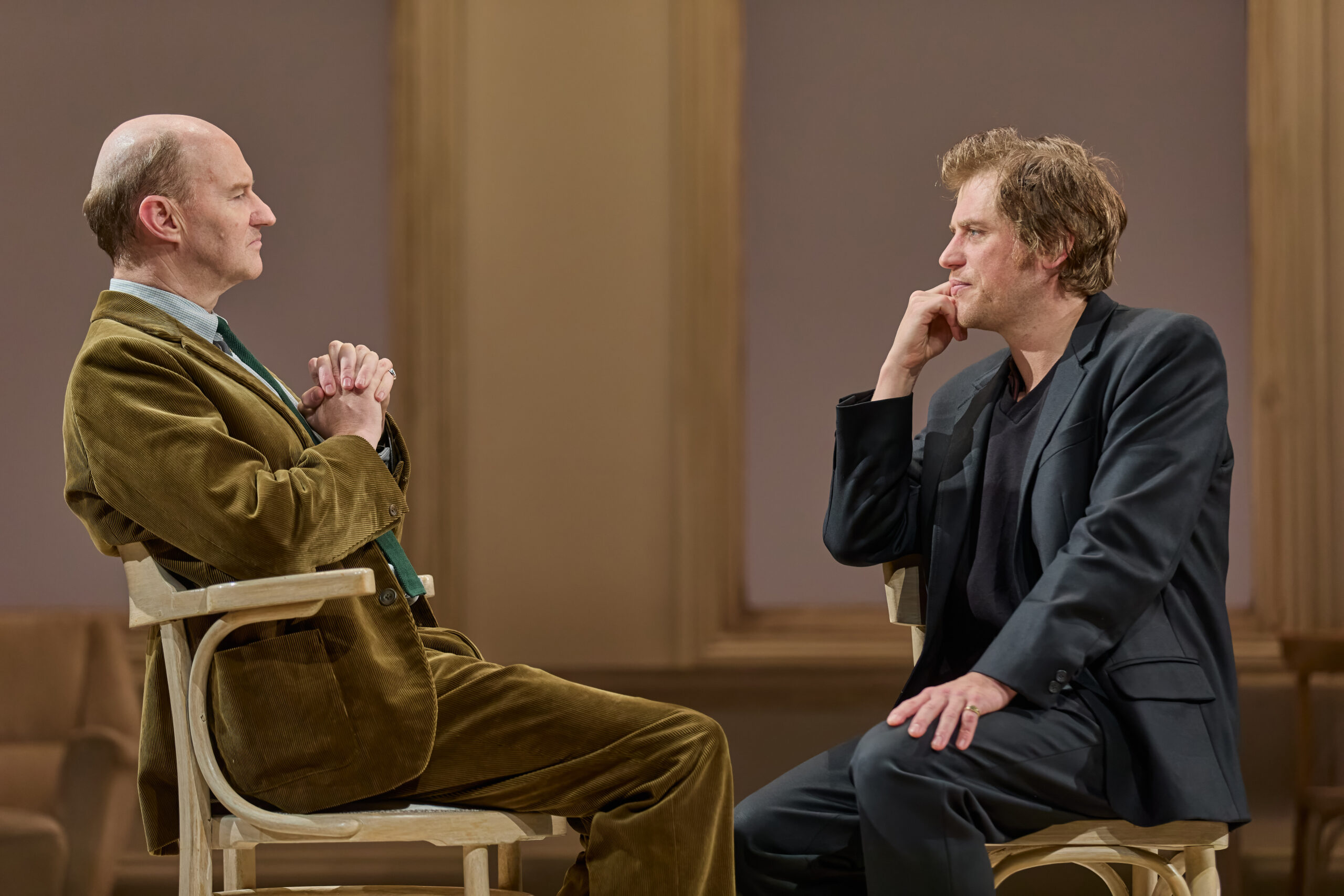The world is so big, so complicated, so replete with marvels and surprises, that it takes years for most people to begin to notice that it is, also, irretrievably broken. We call this period of research “childhood.” - Michael Chabon, The Wes Anderson CollectionÂ

Welcome to Kobayashi Park. It’s going to be a bumpy ride.
I began Good Friday with one thing on my mind: Isle of Dogs. Wes Anderson’s latest stop motion feature length animation, meticulously assembled over four years. Prior to seeing the film itself, I thought, as it’s only next door to Kings’ strand campus, it’d be rude not too check out the exhibition Wes so kindly plonked right by where I happen to study. It’s like he knows I love his films.

Photo taken from the Good Friday Very Bad Queue, featuring the fellow disciples of aesthetic I went with.
Given the sheer amountness of the work that was put into making the film, it would’ve been slack to have done no homework myself. So, I rewatched Fantastic Mr. Fox (2009), a movie based on the charming Roald Dahl novel, adapted to incline even more towards its charm aspect, then cast George Clooney as the voice of the fox, because you can never have enough charm.

Depiction of a bathhouse of a Mayor. As you can tell, it’s quite fancy.
Unable to contain my excitement I proceeded to rewatch a few more of Anderson’s films, as well as finally begin to read a birthday present from a couple of years prior: The Wes Anderson Collection, by Matt Zoller Seitz. In it, Anderson is interviewed by the author, with excerpts for each film from Bottle Rocket (1996) to Moonrise Kingdom (2012).

Just a boy and his dog.
In the 1265-word introduction, Michael Chabon writes “In their set design and camerawork, their use of stop-motion, maps, and models, Wes Anderson’s films readily, even eagerly, concede the “miniature” quality of the worlds he builds.” Chabon likens Anderson to Vladimir Nabokov and Joseph Cornell, the former a novelist, the latter a box-maker. Cornell’s boxes require only a glance from someone who has seen an Anderson flick to get why; they possess the same quaint charm, wholesome in spite of, not in lieu of, the world around them.

Mayor Kobayashi has the lectern now.
“Anderson, like Nabokov, understands that distance can increase our understanding of grief, allowing us to see it whole. But distance does not – ought not – necessarily imply a withdrawal…He reduced their scale, and let his patience, his precision, his mastery of detail – detail, the God of the model-maker – do the rest.” Chabon writes.

A scrap with some strays over maggot-infested leftovers…Is it worth it?
“With each of his films, Anderson’s total command of detail – both the physical detail of his sets and costumes, and the emotional detail of the uniformly beautiful performances he elicits from his actors – has enabled him to increase the persuasiveness of his own family Zemblas, without sacrificing any of the paradoxical emotional power that distance affords.”

Detail. Detail. Detail.
After queuing outside for half an hour then inside for another 15 minutes, we finally emerged into the exhibition proper. Inside, the Noodle Bar greets you, it’s staff clad in Dragon’s tops, similar to one worn by Boss (voiced by Wes Anderson ever-present Bill Murray) in the film.

The good men and women of the noodle bar.
Noodles were no-go’s by the time we’d arrived – they’re rumoured to run out at about 4pm everyday for those of you seeking to get your ramen on – but sake and gin was still abundant. We decided to give the former a run, and found that, sake is delicious!

Sake cocktails.
Once inside we were faced with sets from the film, which have to be seen in person to be believed. Meticulous doesn’t do justice to the individual tile paintings of Kobayashi’s bathhouse; the precise placement of each stray hair on the dogs; the pristine hygiene of the science laboratory.

Working on a cure – a cure for dogs.
It would be pointless for me to adorn this article with images of each set, and a disservice to you, the reader. I’ve already written enough about the exhibition, and Wes Anderson. If you’re a Wes Anderson fan chances are you’ve already been, if for some reason you’re not, I’ll conclude with a final, compelling quote from Chabon’s words on Joseph Cornell.

A westhetic Cornell box.
“Cornell always took pains to construct his boxes himself; indeed the box is the only part of a Cornell work literally “made” by the artist. The box, to Cornell, is a gesture – it draws a boundary around the things it contains, and forces them into a defined relationship, not merely with each other, but with everything on the far side of the box. The box sets out the scale of a ratio; it mediates the halves of a metaphor. It makes explicit, in plain, hand-crafted wood and glass, the yearning of the model-maker to analogize the world, and at the same time it frankly emphasizes the limitations, the confines, of his or her ability to do so.”

Whatever happened to “Man’s Best Friend?”
The exhibition will run until April 5th. Wes Anderson’s Isle of Dogs is in UK cinemas now.Â

















